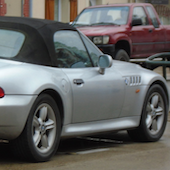Train Horn on F11 530

-
Latest Topics
-
13
Fuel rail pressure problems.
I get 3500 mbar to fuel rail was driving hit a pothole and car died never started after that -
2
Bmw x4 2015 3.0d injector issue?
Hi Dave, It appears that my Ista+ was out of date and the idrive(ecu) software in the vehicle is running the 2018 version, therefore, reading the vehicle with the up to date remote ista from the dealership shows there is nothing wrong with the car. It's already booked for a software update with the 2025 version Thanks!- 1
-

-
1
Would you buy this car?
Morning Annamaria Welcome to the Forum As with any purchase of a Second hand car it falls on you to make all the checks you can if your not able/capable then ask someone who is to check for you. There may be a charge from people like the AA/RAC or similar but at least you will feel confident in your decision. Just asking on a Forum could get conflicting advice as no one but you has actually seen the car? Well I assume you have have had hands on it Good Hunting Dave -
1
Selling a BMW wall charger
Maybe the i3/i8 section or maybe double post there and For Sale section Dave -
1
BMW electric forum
It's a good thought and may be able to create one in the near future when updating the site
-
-
Recent Achievements

.thumb.jpg.555807fc7d5c059a2b797cdec4cd5bd1.jpg)




Recommended Posts
BMW Official Store
Sponsored Ad
Name: eBay
BMW Model: BMW Store
BMW Year: 2024
Latest Deals
BMW Official Store for genuine BMW parts & accessoriesDisclaimer: As the club is an eBay Partner, The club may be compensated if you make a purchase via eBay links
Join the conversation
You can post now and register later. If you have an account, sign in now to post with your account.